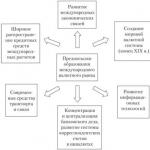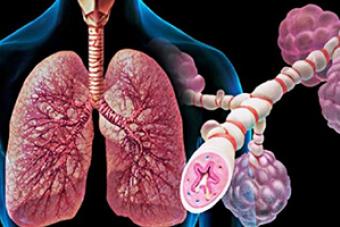The most important methods for the synthesis of alkanes are:
1.2.1. Hydrogenation of alkenes
Hydrogenation of alkenes proceeds under hydrogen pressure in the presence of a catalyst (Pt, Pd or Ni).
1.2.2. Hydrogenation or reduction of alkyl halides
During catalytic hydrogenation in the presence of palladium, alkyl halides are converted to alkanes.
Alkanes are also prepared by the reduction of alkyl halides with a metal in acid.

Iodoalkanes can be easily reduced in a sealed ampoule with hydroiodic acid.

1.2.3. Reaction of haloalkanes with sodium (Wurtz reaction)
The Wurtz reaction makes it possible to obtain a hydrocarbon with a greater number of carbon atoms than in the original compound.
It is suitable for the synthesis of only symmetrical alkanes using primary(!) alkyl halides. In the case of using various haloalkanes as starting compounds, a mixture of three hydrocarbons is obtained as a result of the reaction:

This mixture has to be separated, which is not always possible.
Instead of sodium, other metals can be used in this reaction, such as magnesium, zinc, lithium.
1.2.4. Kolbe synthesis - electrolysis of sodium or potassium salts of carboxylic acids
The electrolysis of sodium or potassium salts of carboxylic acids also leads to the production of symmetrical hydrocarbons.

2. Alkenes
Hydrocarbons of composition C n H 2n with an open chain containing one double bond are called alkenes . The simplest hydrocarbon of this series is ethylene CH 2 =CH 2 . The carbon atom in ethylene is in the sp 2 hybrid state (trigonal carbon). Due to the three hybridized orbitals, each carbon atom forms three -bonds: one - with a neighboring carbon atom, two - with two hydrogen atoms. Side overlap of two 2p-orbitals of carbon atoms gives -bonds and makes it impossible to spin around -carbon-carbon bonds. This is the reason for the phenomenon geometric isomerism.
Geometric isomers (the composition and method of binding atoms is the same, the arrangement of groups and atoms in space is different). These isomers are named E, Z -nomenclature. It is possible to use classical cis- and trance- notation for determining the spatial arrangement of the same or similar groups relative to the comparison plane.

The relative seniority of the substituents at each carbon atom with a double bond is determined by the atomic number: H (atomic number - 1) - junior, C (atomic number - 6) - senior deputy; if the atoms at carbon with a double bond are the same, then the seniority of subsequent atoms is considered: - CH 3 (subsequent atoms - H, H, H) - junior deputy; -CH (CH 3) 2 (subsequent atoms - H, C, C) - senior deputy.
organic synthesisMechanisms of chemical processes
Nominal reactions
Synthesis KolbeWurtz reaction
Kucherov's reaction
Lebedev reaction
Konovalov's reaction
Zaitsev's rule
Markovnikov's rule
Wöhler reaction
Dumas reaction
Wagner reaction
Berthelot reaction
Diels–Alder reaction
Zelinsky-Kazansky reaction
Wöhler reaction
Friedrich Wöhler,1800 - 1882
Synthesis of oxalic acid
during the hydrolysis of cyanogen
acidic environment, 1824
Synthesis of urea from
carbon dioxide and ammonia
at high temperatures and
pressure, 1828
Getting acetylene at
hydrolysis of calcium carbide
(obtained by fusion
coke and lime), 1829
Wöhler reactions
Hydrolysis of cyanogen to form oxalic acidacids, 1824
Wöhler reactions
Synthesis of urea from carbon dioxide and ammonia,1828
“I can no longer remain silent,” Wöhler writes to his
teacher, J. Ya. Berzelius, - and must inform
You that I can get urea without the help of the kidneys
dog, human, and generally without the participation of any
living being..."
T0
CO2 + 2NH3 → H2O +
Wöhler reactions
Obtaining acetylene by hydrolysis of carbidecalcium, 1862
In 1892 Moissan (France) and Wilson (Canada)
proposed the design of an electric arc furnace,
suitable for industrial use:
obtaining calcium carbide by alloying
burnt lime and coal
Or CaCO3 → CaO + CO2; CaO + 3C → CaC2 + CO
Dumas reaction
Fusion of salts of carboxylic acidswith alkalis:
0
CaO, T
Н3С-СООНa + NaOH → CH4 + Na2CO3
Decarboxylation of salts of carboxylic acids (- CO2 )
French chemist.
Member of the French Academy of Sciences
(1832)
Member of the Paris Academy
medicine (1843)
President of the Academy of Sciences (1843)
He also worked in public
activity. In 1850-1851 minister of agriculture and
trade in government
Jean Baptiste André Dumas
Napoleon Bonoparte.
1800 - 1884
Wagner reaction
Mild oxidation of alkenesaqueous solution
potassium permanganate with
diatomic formation
alcohol
Egor Egorovich Wagner,
1849 - 1903
Konovalov's reaction
Mikhail IvanovichKonovalov,
1858 - 1906
Nitration of hydrocarbons
dilute HNO3 at
elevated or
normal pressure (according to
free radical
mechanism).
Doctoral dissertation
"Nitrating action
weak nitrous acid
limiting hydrocarbons
character" (1893)
10. Berthelot reaction
Synthesis of ethanol by hydration of ethylene:French chemist.
Member of the Paris Academy of Sciences
(1873)
Corresponding member
Petersburg Academy of Sciences (with
1876)
In 1895-1896. Berthelot was
foreign minister
France.
Marcellin Berthelot,
1827 - 1907
11. Rules by A. M. Zaitsev (1875), V. V. Markovnikov (1869)
AlexanderMikhailovich Zaitsev,
1841-1910
Vladimir Vasilievich
Markovnikov,
1837-1904
12. Rules by A. M. Zaitsev (1875), V. V. Markovnikov (1869)
When protic acids or water are added tounsymmetrical unsaturated hydrocarbons
a hydrogen proton joins the most
hydrogenated carbon atom
(product formation proceeds through the most
stable carbocation) - rule
Markovnikov. Rep. excl. from the rule.
When split off - a hydrogen proton is split off
from least hydrogenated atom
carbon - Zaitsev's rule.
13. Exercises according to the rules of Zaitsev and Markovnikov
From which halogenated hydrocarbonswith alcohol solution
potassium hydroxide can be obtained:
1) 2-methylpentene-1
2) 3-methylpentene-2
3) 4-methyl-3-ethylpentene-2
4) 3-ethylhexene-2?
14. Wurtz reaction, 1865
Synthesis of symmetrical alkanesfrom alkyl halides to
reactions with sodium (even easier
with potassium)
Charles Adolf Wurtz,
1817- 1884
President of the Paris
Academy of Sciences
15. Synthesis Kolbe, 1849
Electrolysis of aqueous solutionspotassium and sodium salts
carboxylic acids.
Adolf Wilhelm
Hermann Kolbe,
1818- 1884, Germany
16. Grignard reagent, 1912
Organomagnesium chemicalsconnections, for example
magnesium methyl iodide CH3MgI
magnesium benzene bromide C6H5MgBr.
Victor Grignard,
1871- 1935, France
Nobel laureate
awards in chemistry
17. Diels-Alder reaction
Diene synthesis - reaction, cycloadditiondienophiles and conjugated dienes to form
six-term cycle:
18. Diels-Alder reaction
Kurt Albert, Germany1902 - 1958
Otto Paul Hermann Diels,
Germany, 1876 - 1954
In 1950, for diene synthesis, they were awarded
Nobel Prize in Chemistry
19. Reaction Zelinsky - Kazansky
ɳ = 70%20. Reaction Zelinsky - Kazansky
Graduated from Novorossiyskuniversity in Odessa (1884)
Professor of Moscow
University (1911-1917)
Organized the Institute
Organic Chemistry Academy of Sciences of the USSR
(1935), since 1953 the institute has worn it
name
Created the first coal
gas mask (1915), taken on
Nikolai Dmitrievich
weapons during the First
Zelinsky,
world war in Russian and
The Russian Empire,
allied armies.
1861 - 1953
21. Charcoal gas masks
Soldiers of the Czech legion of the Russian army inZelinsky-Kummant gas masks
22. Reaction Zelinsky - Kazansky
Boris AlexandrovichKazansky,
1891 - 1973
Graduated from Moscow University
(1919)
Worked in Moscow
university under the leadership
N. D. Zelinsky
He taught at the Moscow
university workshop on
general chemistry, qualitative and
quantitative analysis, and
later in organic chemistry,
petroleum chemistry, organic
catalysis
Academician of the Academy of Sciences of the USSR
23. Kucherov reaction
Hydration of alkynes inpresence of Hg2+ salts in
acidic environment.
Mikhail Grigorievich
Kucherov,
1850 - 1911
24. Lebedev reaction
Lebedev proposed a one-stage methodobtaining butadiene from ethyl alcohol
(catalysts: ZnO, Al2O3; T 400-5000C)
2CH3CH2OH
Sergey
Vasilevich
Lebedev,
1874-1934.
2H2O + CH2=CH-CH=CH2 + H2
Thanks to the work of Lebedev
industrial production
synthetic rubber started in the Soviet
Union in 1932 - for the first time in the world.
25. Reagents
Grignard reagentTollens' reagent OH
Ammonia solution of copper chloride (I)
[Сu (NH3)2]Cl
26. Catalysts
Na catalyst in liquid ammoniaLindlar catalyst
Na to NH3
Pd// Pb2+
Acidic solution of copper chloride (I) in ammonium chloride
NH4Cl, CuCl
Ziegler - Natta
See what reactions are used (workbook)
Or Kolbe process(named after Adolf Wilhelm Hermann Kolbe and Rudolf Schmitt) - chemical reaction of sodium phenolate carboxylation by the action carbon dioxide under harsh conditions (pressure 100 atm., temperature 125 °C) followed by acid treatment of the product. In industry, this reaction is used to synthesize salicylic acid, which is the precursor aspirin, as well as β-hydroxynaphthoic and other acids. A review article was devoted to the Kolbe-Schmitt reaction and its application.
reaction mechanism
The key step in the mechanism of the Kolbe-Schmitt reaction is the nucleophilic addition of the phenolate ion to carbon dioxide, which leads to the formation of the corresponding salicylate.
The direction of the reaction depends on which phenolate is used as the starting compound. When sodium phenolate is introduced into the reaction, ortho- substituted product. This is explained by and he sodium able to stabilize the six-membered transition state from which the electrophilic attack of the aromatic ring occurs phenol. When using potassium phenolate, the formation of a six-membered transition complex is less favorable, and therefore pair- substituted product.
The reaction is facilitated by the presence of electron-donating substituents, for example, polyhydric phenols (phloroglucinol, resorcinol , pyrocatechin) are carboxylated in an aqueous solution of potassium carbonate.
An industrial version of the Kolbe-Schmitt reaction used for the synthesis of salicylic acid and its derivatives (p-amino-, 5-chlorosalicylic acid, etc.) is the Marasse modification - carboxylation of a mixture of phenol and potassium carbonate with carbon dioxide at 170 ° C and a pressure of 9-13 MPa.
Kolbe reaction method for obtaining hydrocarbons by electrolysis of solutions of salts of carboxylic acids (electrochemical synthesis): During electrolysis, mixtures of salts of various acids are formed, along with symmetrical (R-R, R "-R"), asymmetrical hydrocarbons (R-R "). K. R. allows you to obtain higher monocarboxylic (1) and dicarboxylic (2) acids (after hydrolysis of the corresponding esters ): RCOO - +R "OOC (CH 2) n COO→R (CH 2) n COOR" (1) 2ROOC (CH 2) n COO - →ROOC (CH 2) n COOR (2) K. r. finds use in industry, for example, for the production of sebacic acid, which is used in the production of polyamides (See Polyamides)
and fragrant substances. The reaction was proposed by the German chemist A. V. G. Kolbe in 1849. Lit.: Surrey A., Handbook of organic reactions, trans. from English, M., 1962; Advances in Organic Chemistry, v. 1, N.Y., 1960, p. 1-34.
Great Soviet Encyclopedia. - M.: Soviet Encyclopedia. 1969-1978 .
See what "Kolbe reaction" is in other dictionaries:
Kolbe Adolf Wilhelm Hermann (September 27, 1818, Ellihausen, ≈ November 25, 1884, Leipzig), German chemist. Since 1851 he was a professor at Marburg, and since 1865 at Leipzig University. In 1845, K. synthesized acetic acid, starting from carbon disulfide, chlorine and ... ...
I Kolbe (Kolbe) Adolf Wilhelm Hermann (September 27, 1818, Ellihausen, November 25, 1884, Leipzig), German chemist. Since 1851 he was a professor at Marburg, and since 1865 at Leipzig University. In 1845, K. synthesized acetic acid, starting from carbon disulfide, ... ... Great Soviet Encyclopedia
Or the Kolbe process (named after Adolf Wilhelm Hermann Kolbe and Rudolf Schmidt) is a chemical reaction of sodium phenolate carboxylation by the action of carbon dioxide under harsh conditions (pressure 100 atm., temperature 125 ° C), followed by ... ... Wikipedia
The Kolbe Schmitt reaction or the Kolbe process (named after Adolf Wilhelm Hermann Kolbe and Rudolf Schmitt) is a chemical reaction for the carboxylation of sodium phenolate by the action of carbon dioxide under harsh conditions (pressure 100 atm., ... ... Wikipedia
The Kolbe Schmitt reaction or the Kolbe process (named after Adolf Wilhelm Hermann Kolbe and Rudolf Schmidt) is a chemical reaction for the carboxylation of sodium phenolate by the action of carbon dioxide under harsh conditions (pressure 100 atm., ... ... Wikipedia
- (1818 84) German chemist. He developed methods for the synthesis of acetic (1845), salicylic (1860, Kolbe-Schmitt reaction) and formic (1861) acids, electrochemical synthesis of hydrocarbons (1849, Kolbe reaction) ... Big Encyclopedic Dictionary
- (Kolbe) (1818 1884), German chemist. He developed methods for the synthesis of acetic (1845), salicylic (1860, Kolbe-Schmitt reaction) and formic (1861) acids, electrochemical synthesis of hydrocarbons (1849, Kolbe reaction). * * * KOLBE Adolf Wilhelm ... ... encyclopedic Dictionary





